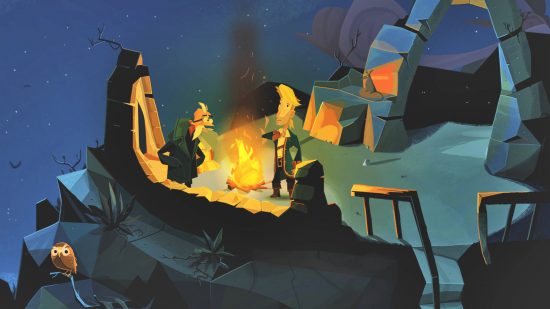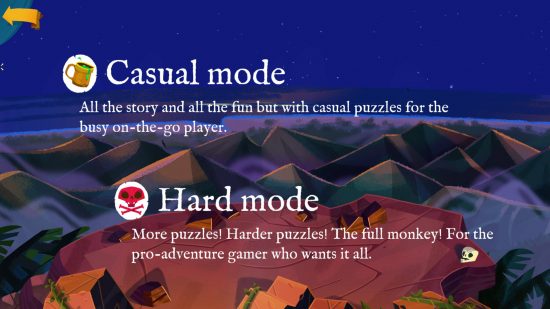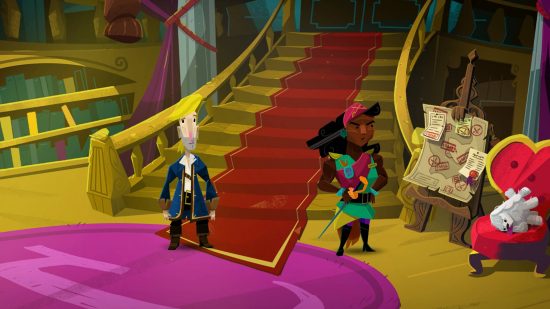Want to know if you should choose Return to Monkey Island casual or hard mode? Difficulty modes for adventure games may seem like a bizarre concept for some, but these settings can make the difference between someone enjoying Guybrush’s latest adventure or getting frustrated. Veterans will likely shudder at the mere mention of the Monkey Wrench puzzle from Monkey Island 2: LeChuck’s Revenge.
However, the game doesn’t quite explain what the difficulty options actually mean. Look no further than the in-game descriptions for Return to Monkey Island casual and hard modes: “All the story and all the fun but with casual puzzles for the busy on-the-go player”. “More puzzles! Harder puzzles! The full monkey! For the pro-adventure gamer who wants it all”. Sure, you may sense that one is tougher than the other, but how exactly does the difficulty change? Here’s what you need to know about casual and hard mode.
Return to Monkey Island casual and hard mode differences
There are several differences between casual and hard modes in Return to Monkey Island. Firstly, if you’re playing in casual mode, you will have some more beginner’s tips during the prelude, including navigating the game’s inventory and how to sprint. Fewer tips appear in hard mode, but some still show up, such as skipping and reviewing dialogue.
The main thing that changes between difficulty modes is not exactly what the puzzles are, but how many steps you need to finish to move on. Some may take far longer to complete and involve a few complicated steps. However, none of these differences changes how the story unfolds, so you won’t miss out if you choose to complete the game in casual mode.
In order to explain the key differences between the two modes, we will need to spoil one of the game’s early puzzles in the paragraph below. Don’t worry, it’s not a puzzle that contains massive spoilers, but it has multiple steps.
Still here? Okay. In the quest to get the mop, you will talk to Carla, the new governor of Melee Island. As you do so, you may see some books on the shelf. Guybrush has the option to ask Carla to borrow them, but she’ll reject your request as Guybrush has lost one of her books in the past. Simply saying sorry isn’t enough, but luckily the International House of Mojo has an apology frog for sale. In casual mode, just handing the frog to Carla will complete the puzzle, allowing Guybrush to borrow a book quickly. However, in hard mode, you need to write the right words to craft a personalised apology; some are not there by default. You’ll need to find a poster and read it to get at least one of the new options to write in the apology frog before handing it over.
Those are the only fundamental differences between Return to Monkey Island casual and hard modes. If you’re no stranger to the rubber chicken on the pulley puzzle from The Secret of Monkey Island, you should have the best time with hard mode, but newer players may have a better time with casual mode. Of course, if Guybrush Threepwood’s adventures have you wanting more plunder, you can check out the best pirate games to see where your next swashbuckling voyage takes you. We also have a Return to Monkey Island system requirements guide if you want to know if the game will run on your device.


